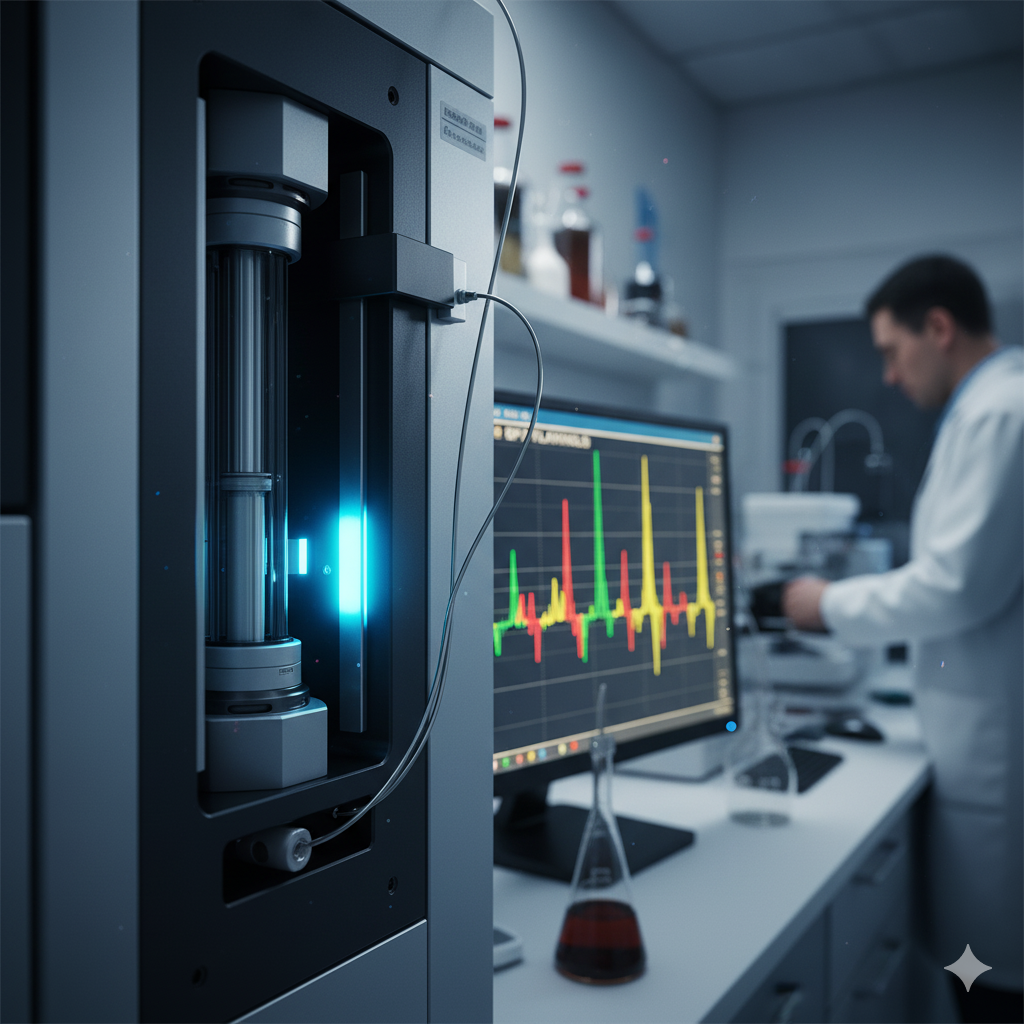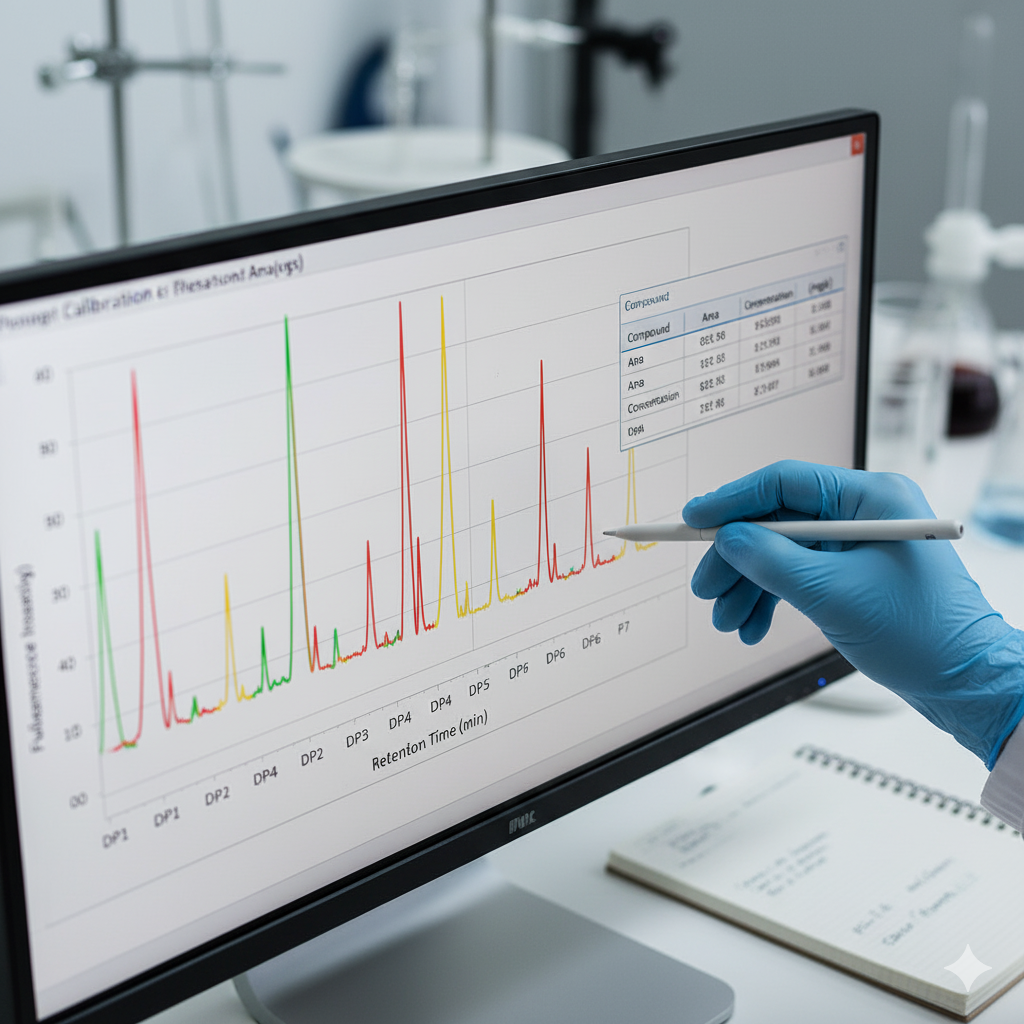close
Choose Your Site
Global
Social Media
Views: 7 Author: Site Editor Publish Time: 2025-10-24 Origin: Site






Cocoa flavanols and procyanidins (CFs) are a group of flavonoids widely recognized for their potential health benefits, driving significant interest from consumers, industry, and researchers. Accurate and reliable methods for quantifying these distinct compounds in cocoa-based products are essential for both scientific and commercial purposes.
The most rigorously validated approach for measuring cocoa flavanols and procyanidins (up to Degree of Polymerization, DP1-7) is the AOAC Official Method of Analysis 2020.05.
The Core Methodology: HILIC-HPLC with Fluorescence Detection
AOAC Method 2020.05 utilizes Hydrophilic Interaction Chromatography (HILIC) coupled with Fluorescence Detection (FLD) to achieve precise and reproducible results.
1. Sample Preparation (Extraction)
The sample preparation is tailored to the cocoa matrix:

Lipid Removal (Defatting): For samples expected to contain more than 10% fat, such as chocolates, cocoa liquors, and cocoa powders, the material is first extracted with hexane to remove the lipid components.
Flavanol Extraction: The flavanols and procyanidins (DP 1-7) are then extracted from the defatted material (or directly from cocoa extracts) using an acidified aqueous acetone solvent system, known as AWAA (acetone-water-acetic acid). The mixture is vortexed and sonicated in a 50°C bath, followed by centrifugation.
Clean-up (SPE): Unless unnecessary for the specific matrix (like cocoa extract), the extraction solution is cleaned up using a Solid-Phase Extraction (SPE) MCX PRIME cartridge. This step is crucial for eliminating matrix components that could accumulate on the column and impair analytical performance.
2. Chromatography (HILIC) and Detection (FLD)

Chromatography System: The analysis is performed using an HPLC system with a thermostated column compartment and an autosampler. The required column is a Torus Diol (100*3.0mm id, 1.7μm particle size).
Mobile Phase: A binary gradient is used, consisting of Solvent A (acetonitrile-acetic acid) and Solvent B (methanol-water-acetic acid).
Fluorescence Detection: Flavanols and procyanidins are detected using an FLD with an excitation wavelength of 230 nm and an emission wavelength of 321 nm. Crucially, the Photomultiplier Tube (PMT) gain setting must be optimized to ensure linearity for monomers (DP1) while retaining sensitivity for higher oligomers (up to DP7).
3. Quantification and Calculation

Calibration: The method uses the NIST cocoa extract reference material RM 8403 as the calibrant. Seven separate standard curves are plotted for DP1 through DP7.
Integration: A valley-to-valley integration approach is used to quantify the individual DP peaks (DP1-7).
Total CF: The total cocoa flavanol content (Total CF) is calculated as the sum of the individual CFDPn values.
Validation and Performance of the Method
The collaborative study validated the precision of the AOAC Method 2020.05 by testing seven different cocoa matrices, with Total CF content ranging from 1.0 to 500mg/g.
Repeatability (RSDr): The relative standard deviation for repeatability ranged from 1.6 to 4.8%. This demonstrates excellent within-laboratory consistency and meets the performance expectations set by the AOAC.
Reproducibility (RSDR): The relative standard deviation for reproducibility ranged from 5.8 to 22.4%.
values were generally below 10% for most matrixes, demonstrating good precision across different laboratories.
The performance met the target expectation of RSDR <8% for four matrixes (cocoa powder, cocoa extract, ready-to-mix dietary supplement powder, and baking chocolate).
Note on Milk Chocolate: The reproducibility for milk chocolate was 22.4%. This poorer performance is attributed to the very low CF concentration (around 1mg/g) found in this matrix.
Recommendation: Based on the results, it is recommended to limit the application of AOAC Method 2020.05 to products with a mass fraction of cocoa flavanols above 5mg/g.
This successful collaborative study supports the advancement of AOAC Official Method of Analysis 2020.05 to Final Action status for the evaluated matrixes, solidifying its role as the authoritative method for determining cocoa flavanols and procyanidins.